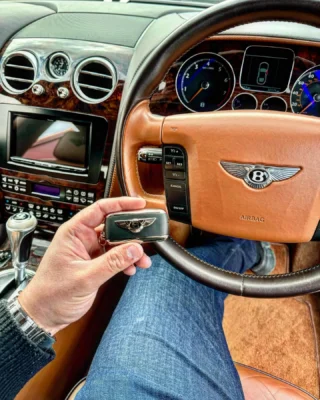This Week's Top Stories About Door Lock Repair

Comprehensive Guide to Car Door Lock Repair: Troubleshooting and Solutions
The integrity and performance of a vehicle's door locks are important for both the security of the car and the safety of its residents. Car door locks can experience a variety of issues, varying from minor mechanical glitches to complete failures. This post seeks to offer a useful overview of car door lock repair, outlining common issues, diagnostic treatments, and solutions.
Comprehending Car Door Locks
Before delving into repair procedures, it is vital to comprehend the elements of a common car door lock. There are car key extraction of locks: mechanical and electronic.
Parts of a Car Door Lock System
- Lock Cylinder: The part where the key is inserted.
- Latches: Mechanisms that hold the door shut.
- Actuator: Electric motor in electronic locks that helps in locking and opening.
- Linkage: Connects the lock cylinder to the lock.
- Remote Key Fob: In electronic systems, this is used to lock and unlock the doors from a distance.
Typical Issues with Car Door Locks
Car door locks can stop working for a plethora of factors. Here are some common issues experienced by vehicle owners:
- Sticking or Frozen Locks: Especially in winter, locks can end up being challenging to operate.
- Lock Not Engaging or Disengaging: Both mechanical and electronic locks can deal with problems where they do not react to the key or remote.
- Key Jams: The key might get stuck in the lock, making it difficult to lock or unlock the door.
- Remote Malfunction: In electronic systems, the key fob might not work due to battery concerns or programming problems.
- Physical Damage: Vandalism or mishaps can harm the lock mechanism.
Troubleshooting Car Door Lock Issues
When a car door lock is not working properly, it is essential to diagnose the issue precisely before continuing with a repair. Below are steps that can help fix the concern:
Step-by-Step Troubleshooting
Visual Inspection:
- Check the door lock and surrounding elements for noticeable damage.
- Take a look at the key for wear and tear.
Evaluate the Key:
- If the lock is sticking or not engaging, try utilizing a spare key if offered.
- Guarantee the key is tidy from dirt and particles.
Examine the Actuator:
- Listen for any noises when pressing the key fob. A clicking sound may suggest a malfunctioning actuator.
Examine Door Wiring:
- Check the electrical wiring that links the door lock to the vehicle's electrical system.
- Search for detached or torn wires.
Temperature Influence:
- If the lock is sticking in winter, use lithium grease to assist oil the mechanism.
Repairing Common Door Lock Issues
As soon as the problem has actually been diagnosed, the repair can start. Here are some common repair strategies for different concerns:
Fixing a Sticking or Frozen Lock
- Cleaning up: Use a graphite lubricant or silicone spray to clean and lubricate the system.
- Heating: If frozen, utilize a hairdryer to warm the area around the locking mechanism thoroughly, avoiding getting too hot.
Fixing a Lock Not Engaging/Disengaging
Lock Cylinder Replacement:
- If the lock cylinder is used, think about replacing it. This frequently includes spying off the door panel to access the lock system.
Actuator Replacement:
- For electronic locks, if the actuator is malfunctioning, it will need replacement. Make certain to detach the battery before attempting this repair.
Fixing a Jammed Key
- Extraction Tool: If a key is stuck, use a set of needle-nose pliers to gently pull it out, or a key extractor.
- Lock Lubrication: Apply a percentage of lube to ease the procedure.
Remote Key Fob Malfunction
- Battery Replacement: Most remotes have replaceable batteries. Follow the producer's guidelines to change the battery.
- Reprogramming: Sometimes, the remote needs to be reprogrammed. Describe the vehicle's handbook for steps to reprogram the key fob.
Physical Damage Repairs
- Door Lock Assembly Replacement: If the lock is physically harmed, total replacement of the lock assembly may be essential.
- Expert Help: If unsure about DIY repairs, seek assistance from a qualified mechanic.
Maintenance Tips for Car Door Locks
To prolong the life of car door locks, regular upkeep is vital. The following practices can assist keep ideal performance:
- Regular Lubrication: Apply appropriate lube to the locks every few months.
- Keep Keys Clean: Regularly tidy the car keys to prevent dirt buildup.
- Prevent Excessive Force: Do not use excessive force when locking or opening; this can cause damage in time.
- See for Signs of Wear: Be attentive to any modifications in the lock's performance and address concerns quickly.
FAQs about Car Door Lock Repair
Q: How can I inform if my door lock is broken?A: Common
signs consist of the lock not engaging or disengaging, a jammed key, sounds from the door when utilizing the key fob, or noticeable damage to the lock assembly.
Q: Can I repair a car door lock myself?A: Yes, many simple problems can be addressed by following the repairing steps in this article, but complicated issues may need professional aid. Q: What type of lube ought to I use
for my locks?A: It is best to use graphite powder or silicone-based lubes given that oil can draw in dirt and gunk. Q: How much does it usually cost to replace a car door lock?A: The cost can differ widely
based upon the vehicle's make and model, but normal replacement costs
can range from ₤ 100 to ₤ 300, consisting of labor. Car door lock repair can seem daunting, however understanding the elements and typical problems can make the procedure a lot more manageable. Whether tackling little repairs yourself or seeking professional help for more considerable issues, keeping the door locks operating correctly is important for vehicle security and safety. Routine upkeep and timely attention to problems can substantially extend the life of your car's locking system.

